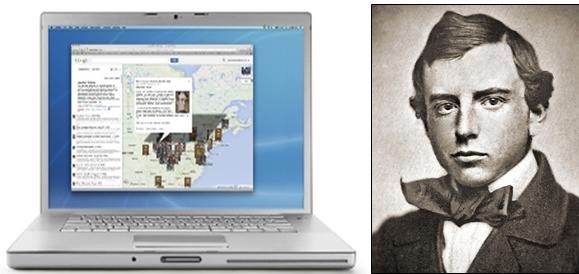Overview
By Thursday morning, October 2 (at 9am), students are required to post a short (1,000 word or less) biographical profile of some historical figure described by Henry Adams in his memoir, The Education of Henry Adams (1918). The goal of this assignment is to learn basic research skills and to create a reference-style entry that might be incorporated into an existing Wikipedia page.
Research and Citation Guidelines
- Identify a figure from The Education who interests you and who already has both a Wikipedia entry and an entry at a major reference source, such as American National Biography (ANB) or Encyclopedia Britannica. You can obtain access to ANB or Britannica through the Dickinson College Library Databases.
- All entries should include at least one quotation about the subject from Henry Adams himself, properly cited to his memoir
- To help expand your entry, you should also read, quote and carefully paraphrase from key selections in ANB and/or Britannica.
- Also, go to historical newspaper databases such as Historical Newspapers (ProQuest) and NewsVault (Gale) (also available from Dickinson College Library Databases) and identify at least one major newspaper obituary for your subject. Once again, read, quote and paraphrase from key selections in this source. You should also save it as a PDF and attach it to your post (Add Media).
- Finally, go to JSTOR (Library Databases) and seek out at least one good academic article that features (or at least mentions) your subject and repeat the pattern above –read, quote and paraphrase. In this case, however, you don’t need to attach any PDFs.
- In all cases, make sure to follow the seminar plagiarism guidelines carefully. Quote and cite when you are borrowing words. Paraphrase and cite when you are borrowing specific facts or ideas. NEVER LOOK AT A SOURCE AS YOU ARE PARAPHRASING IT.
- Citations in this post can be presented in Wikipedia style, with numbers in brackets after each citable sentence and then a corresponding list of numbered notes at the bottom of the page.
- Proper format for citations are pasted below. As a general rule for this seminar, you should follow Chicago Manual of Style (CMS) footnote and bibliography format (See Hacker and Sommers, A Writer’s Reference, pp. 510-531)
- All blog posts should include at least one public domain image of the subject, probably most easily obtained from either Wikipedia or House Divided Project. Those who want to include multiple images are encouraged to do so.
- SAMPLE CITATION FORMAT:
[1] Frederick J. Blue, “Charles Sumner,” American National Biography Online, February 2000 (ANB).
[2] Manisha Sinha, “The Caning of Charles Sumner: Slavery, Race, and Ideology in the Age of the Civil War,” Journal of the Early Republic 23 no. 2 (Summer 2003): 235 (JSTOR).
[3] “Sumner Dead: The Great Statesman Gone to His Rest,” Boston Daily Globe, March 16, 1874, p. 5 (Historical Newspapers).
[4] Henry Adams, The Education of Henry Adams, Library of American Paperback Classics ed. (New York: Penguin Group, 2010), 43.
Writing Tips
- Reference entries require a careful tone. Sometimes people describe this tone as “neutral” or “objective,” but a more precise understanding of the process might be termed “deliberate summary.” Your goal in any short biographical reference entry should be to provide a brief overview of the subject’s life and significance while also demonstrating careful attention to detail. It can be a tricky balancing act and one that requires you to think about what is “most important” about the subject.
- To help organize this entry, you should craft an opening sentence or short paragraph that states the “most important” details about the person in concise fashion. Then, using sub-headings (once again, in Wikipedia-style), create a narrative outline of the subject’s life and legacy that uses information from the sources you have researched to create a sound gateway for understanding.
- And always remember that while it’s important to highlight diverse or competing opinions about your subject –and any notable controversies– this is not the place for serious criticism or celebration. You’re not writing an obituary and you’re not writing a journal article –even though you are using and quoting from both types of sources.
Additional Suggestions
- Those in serious pursuit of understanding their subject may find it worthwhile to actually go “off-line” and to dig up real books and articles from the library itself. In particular, it helps to read biographies. However, the nature of this assignment does not require that kind of extended research. It is just an option that some might find helpful.
- This is also a moment for those who want to make serious improvements in their writing to use the resources of the college to their fullest advantage. Feel free to contact Prof. Pinsker by email or during office hours to get his help, advice and early criticism. He will review drafts. Also, try to push yourself to see a tutor from the Writing Center. Short, focused writing assignments like this are often the best way to improve writing skills.
- Finally, when strategizing over how to organize your post, remember that the ultimate goal here is to create content that could be incorporated or published at an existing Wikipedia page. So, in other words, try to focus on areas where the current Wikipedia entry is weak so that you will maximize your chances of actually seeing your work through to publication online at a popular platform like Wikipedia.
